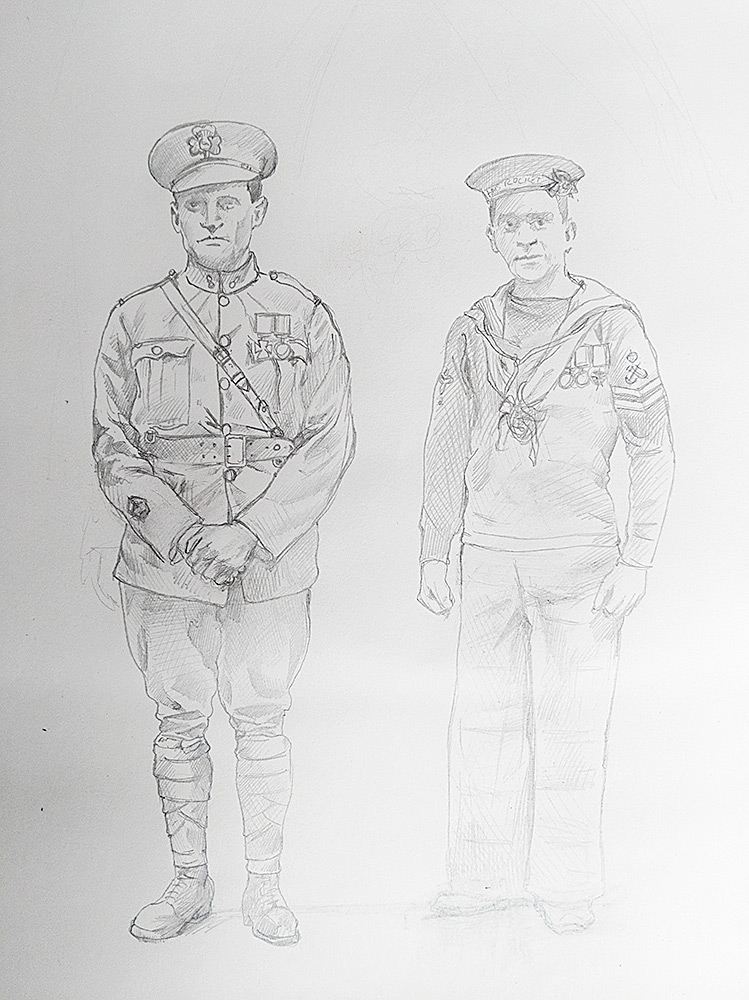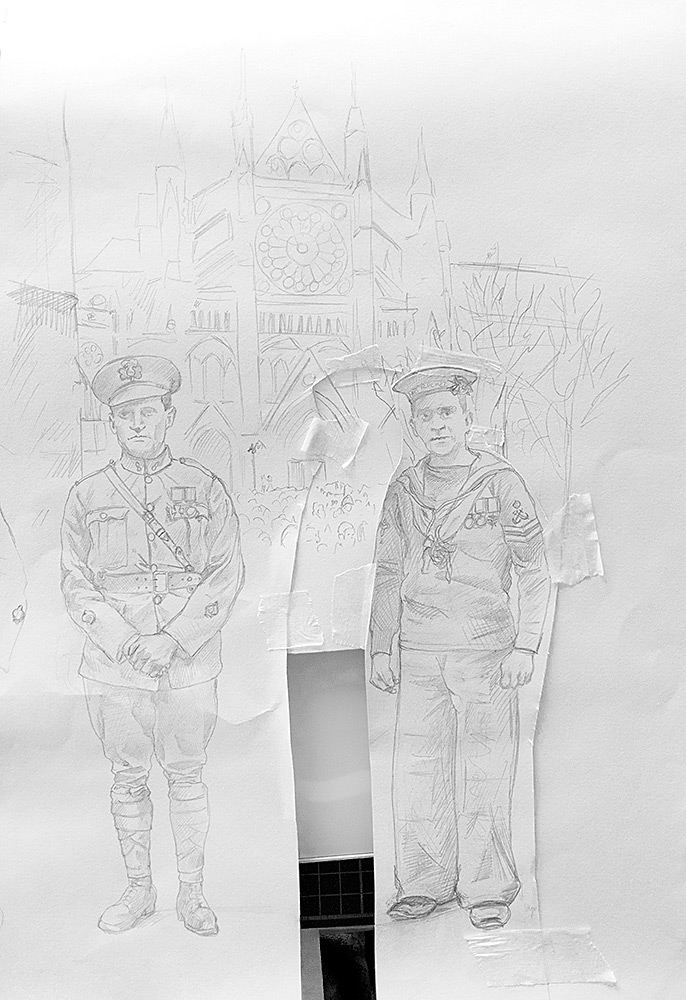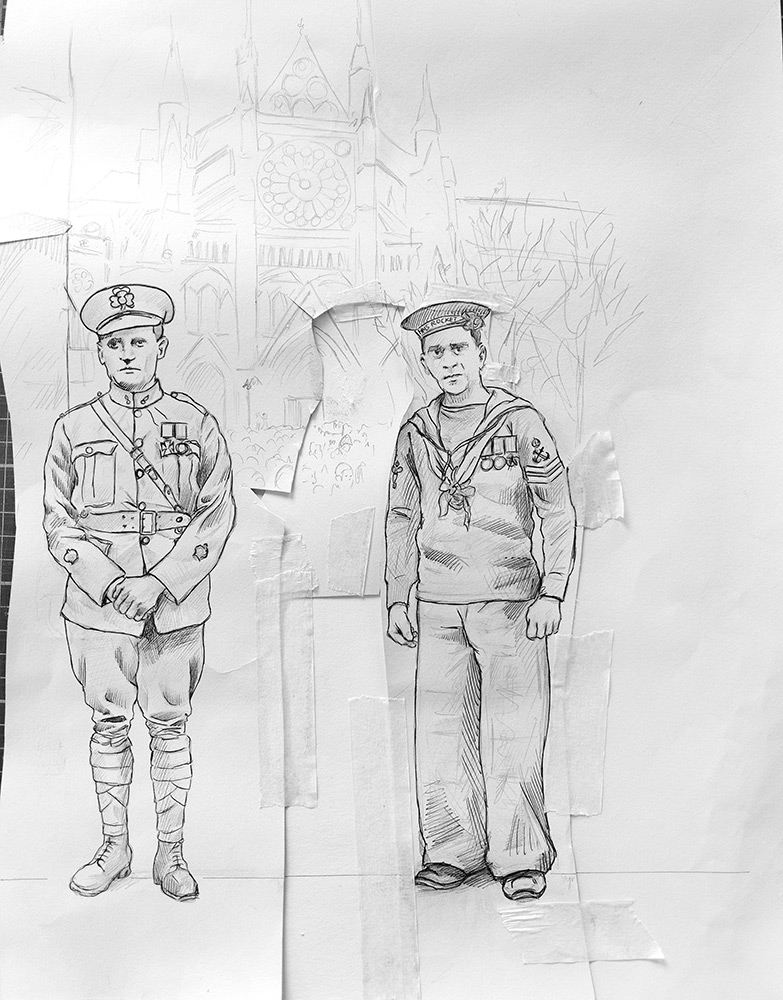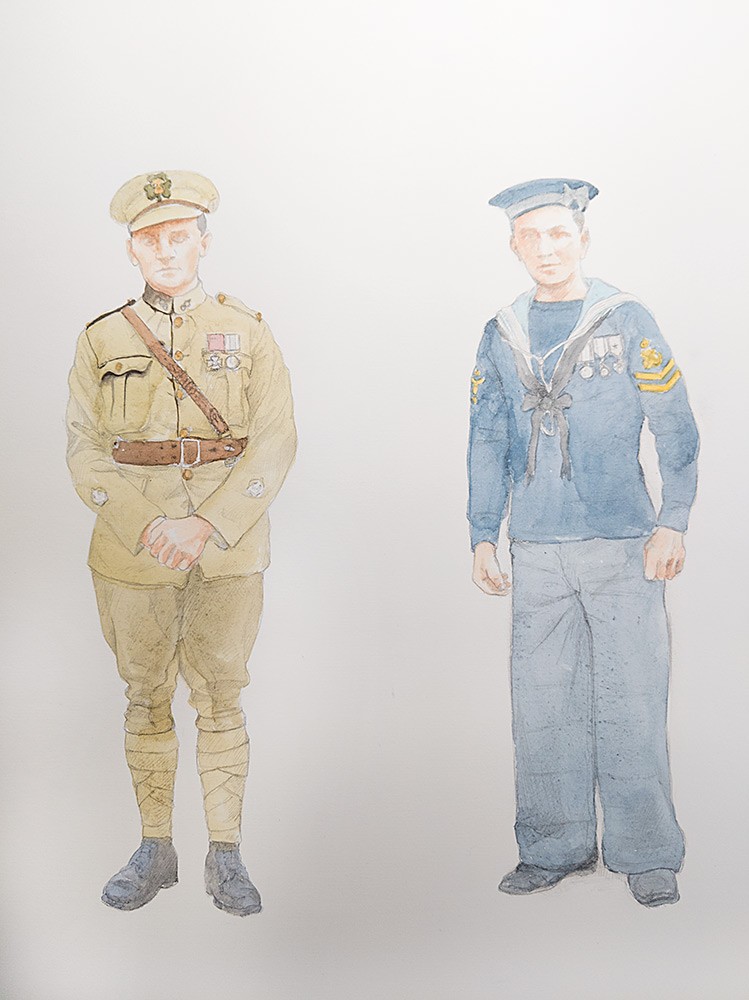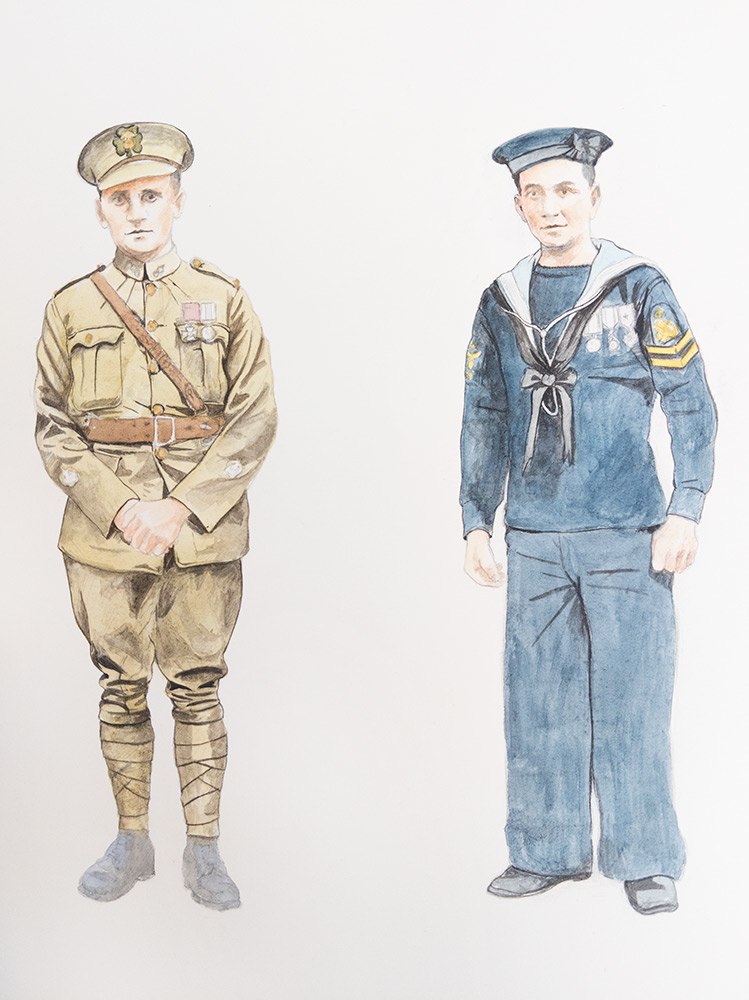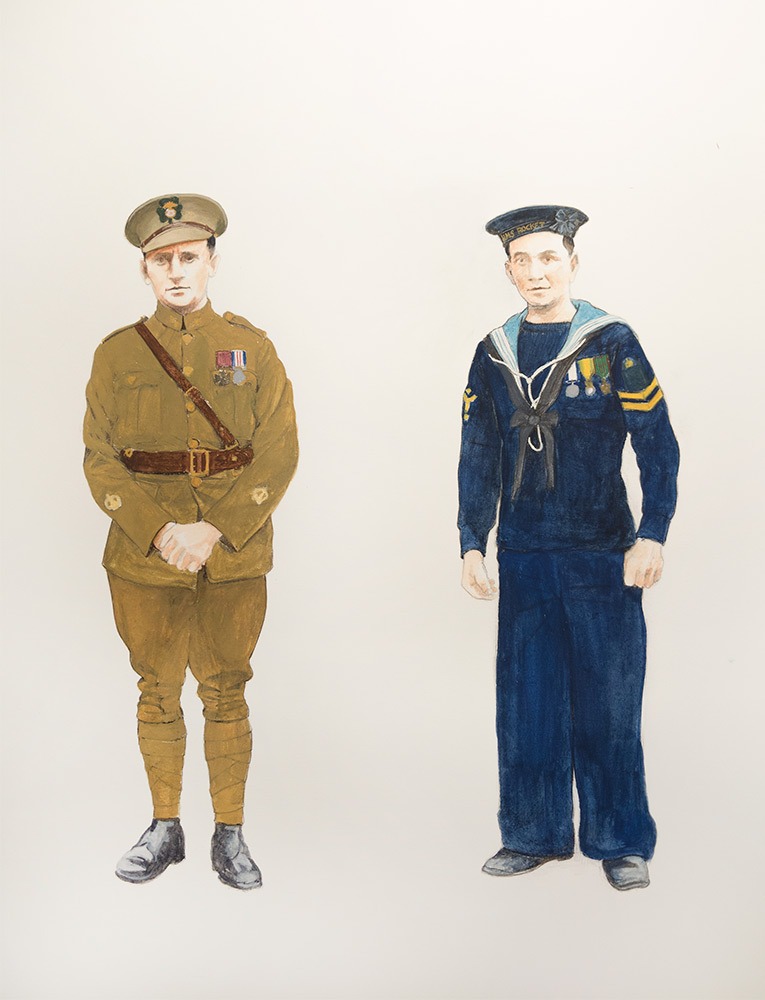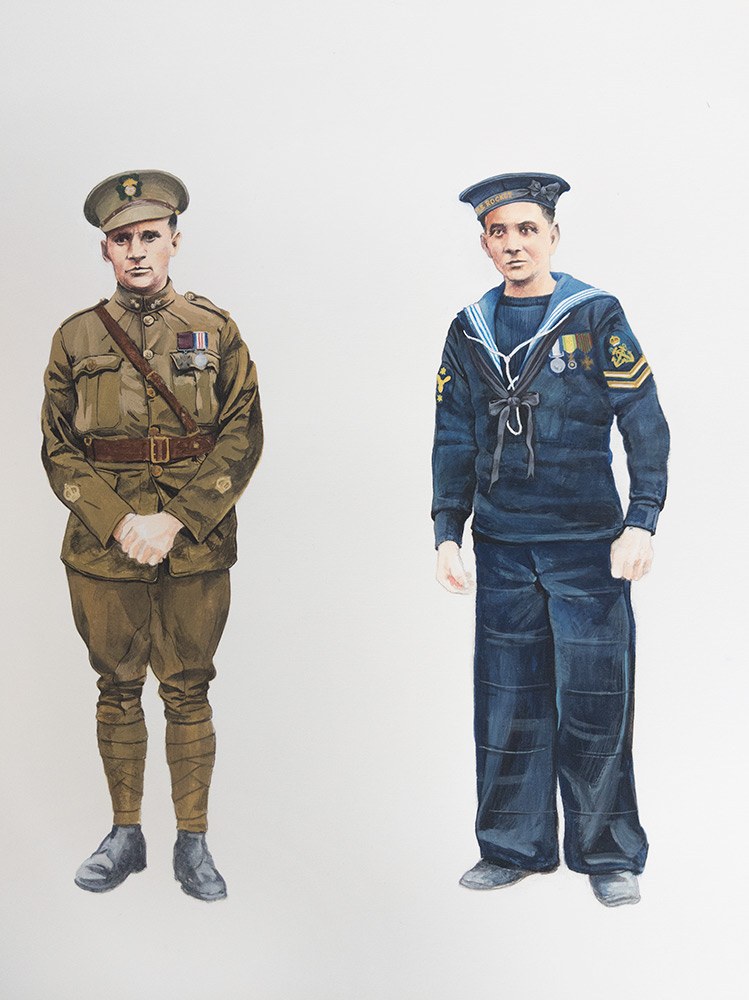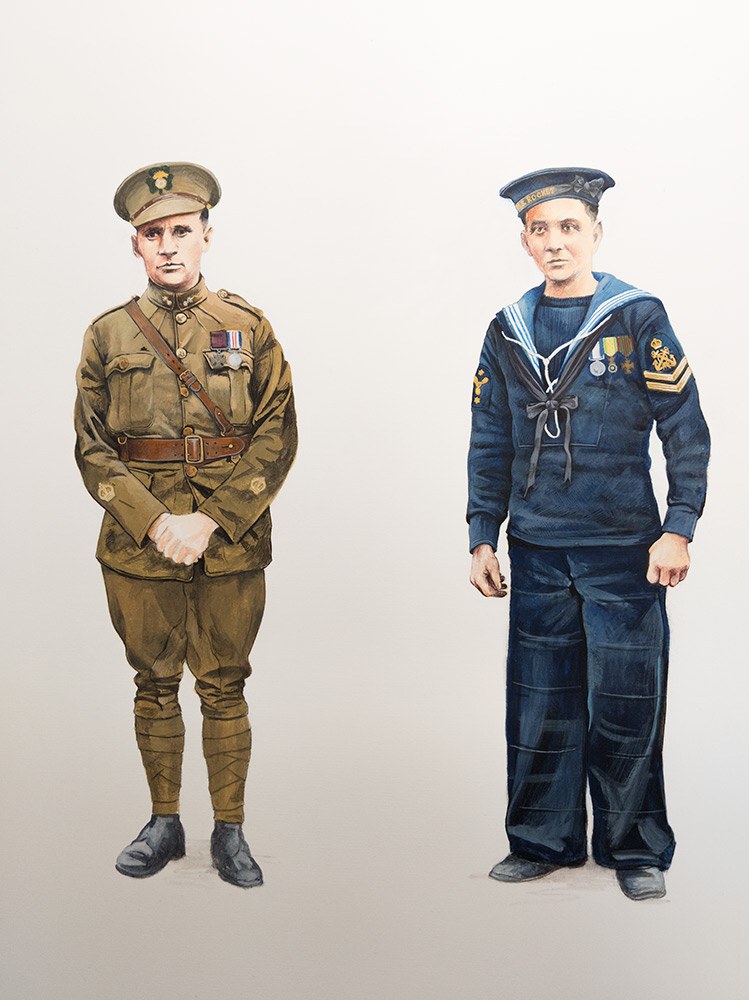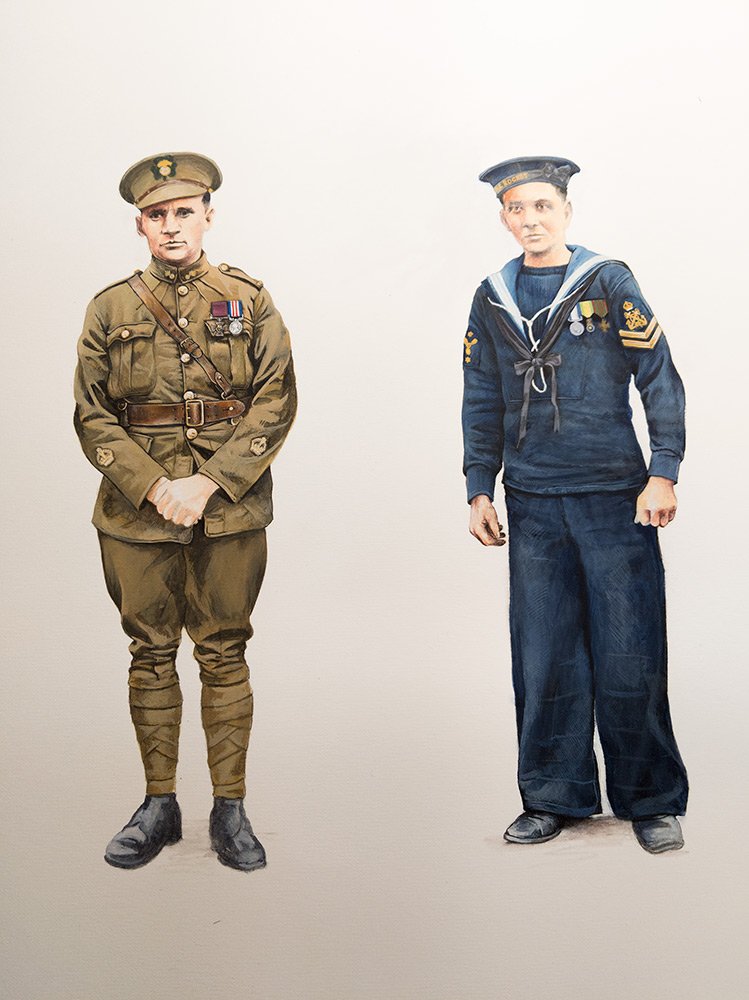Stages in The Painting of Doyle & Leach
This post is a new departure for me, in that I am going to show the various stages in composing, drawing and painting the final commission. As well as talking through the various stages I have also put together a short video compilation to illustrate it.

First a bit of background to the commission. This was interesting, not only because of the personal stories of the two men I had been asked to represent but also because of the time and place they were to be shown. The background of the painting depicts a scene from the burial of the”Unknown Warrior” in Westminster Abbey. The burial took place on the second anniversary of the Armistice that ended the First World War in 1918, on November 11th, 1920.
The VC Honour Guard
For the ceremony, a special ‘Guard of Honour’ was formed for when the coffin was brought into Westminster Abbey. The coffin bore the remains of a soldier fallen on the battlefields in France who was to represent all the fallen in that conflict.
The ‘Guard’ was formed of holders of The Victoria Cross and others who had otherwise distinguished themselves by “special valour” during World War I. The ‘Guard’, ‘The Times’ wrote on 9th November 1920, was to “include representatives of the Royal Navy, the Army, and the Royal Air Force”. They then listed the likely participants, which has been reproduced on the ‘Victoria Cross’ site here.
Company Sergeant-Major Doyle VC, MM, Royal Munster Fusiliers and Stoker Petty Officer Leach CGM, Royal Navy, were part of this special 100 strong Honour Guard.
For more information on the story behind the ‘Unknown Warrior’, I have done a previous post here. and one of special significance today given its 100 year anniversary.
The Video Sequence
Step By Step
The video gives a quick overview of the process and the various stages of the painting. However, there is a lot of work that goes into the painting before a pencil is put to paper. Firstly, there is of course consultation with the client who is commissioning the painting and taking on board their wishes. Secondly, there is in-depth research into the time and place of the figure, which can involve looking at the unit histories. Thirdly, and importantly, detailed research into the uniforms and insignia worn.
I will generally begin by researching the details of the uniform – the main point of the exercise. Apart from the more general uniform details, this will then include regimental or other unit badges, where appropriate. With this painting of Doyle and Leach, there was the added research involved into the medals they wore. When were these medals issued and which they were entitled to wear? The more specific details appertaining to them both can be found on the separate pages I am doing for each of them. To date, I have only done the page on Leach which can be found here.
The next thing I address is establishing a composition – the pose of the figure in basic terms. With this painting, the composition was complicated by having to include two figures in a fairly small space but making them look believable in relation to each other. I also wanted to include something relating to why they were there before Westminster Abbey and then bringing the whole together with the figures.
The First Sketches
I rarely have a full photograph of the subject of the painting, with most of the time only having a grainy portrait photo at best. For this painting, I was fortunate in being able to access a full figure photograph for the figure of Martin Doyle, albeit with him holding his hands behind his back. In order to show his Warrant Officer badges, I only had to draw him holding his hands to the front.
With James Leach, however, I was on familiar territory, only having a not very sharp, portrait photograph. My way of working in these cases is to source suitable contemporary photos and other images. On occasion I will use myself or others as models, to construct in a piecemeal way, the pose of the figure. Initially, I will normally carry out this work on the computer.
From there I will make a rough pencil sketch to ensure the proportions etc are accurate. I will then proceed to add all the necessary uniform details. With Doyle and Leach I then had to put them together to get an idea of the relative scale of the figures to each other. Neither man was very tall, but Doyle was apparently slightly taller than Leach.
The composition is now developing with a basic drawing-in of Westminster Abbey in the background. To achieve a better balance in the painting, I cut out the drawing of Leach and moved him to the side. Once I was happy with their relative positions, I went over the figures with black ink ready for transfer to what will be the final painting surface. I then redraw this in fine detail ready for painting.
Watercolour Wash
I always begin with a light watercolour wash to establish the basic colours and then establish the main shadow areas to then starting to model the forms of the figures.
Gouache Overpainting Begins
It’s then a simple case of developing the painting in terms of colour and detail, using mainly gouache paints, which are essentially opaque watercolours.
The Background Drawn In Detail
While I will sometimes begin the painting with a suggestion of background, very often this part of the painting comes in after I have almost finished the figure or figures. My reason for this is simply that the figure when painted will very often suggest the more appropriate composition of the background scene, for which I will always have a few options.
With this painting of Doyle and Leach, I felt immediately that the building of Westminster Abbey alone was not enough. I, therefore, decided to make the scene more of a composite rather than a real scene. I decided to include a still taken from one of the newsreel films of the time, of the Guards carrying the coffin, and was much happier with the result.
The Final Painting
To create a separation of the scene with the Guards carrying the coffin and the Abbey, the latter was given a coloured watercolour wash. The former was painted in a monochrome grey, picking out the Union flag on the coffin. This final touch I felt tied the whole painting together.



